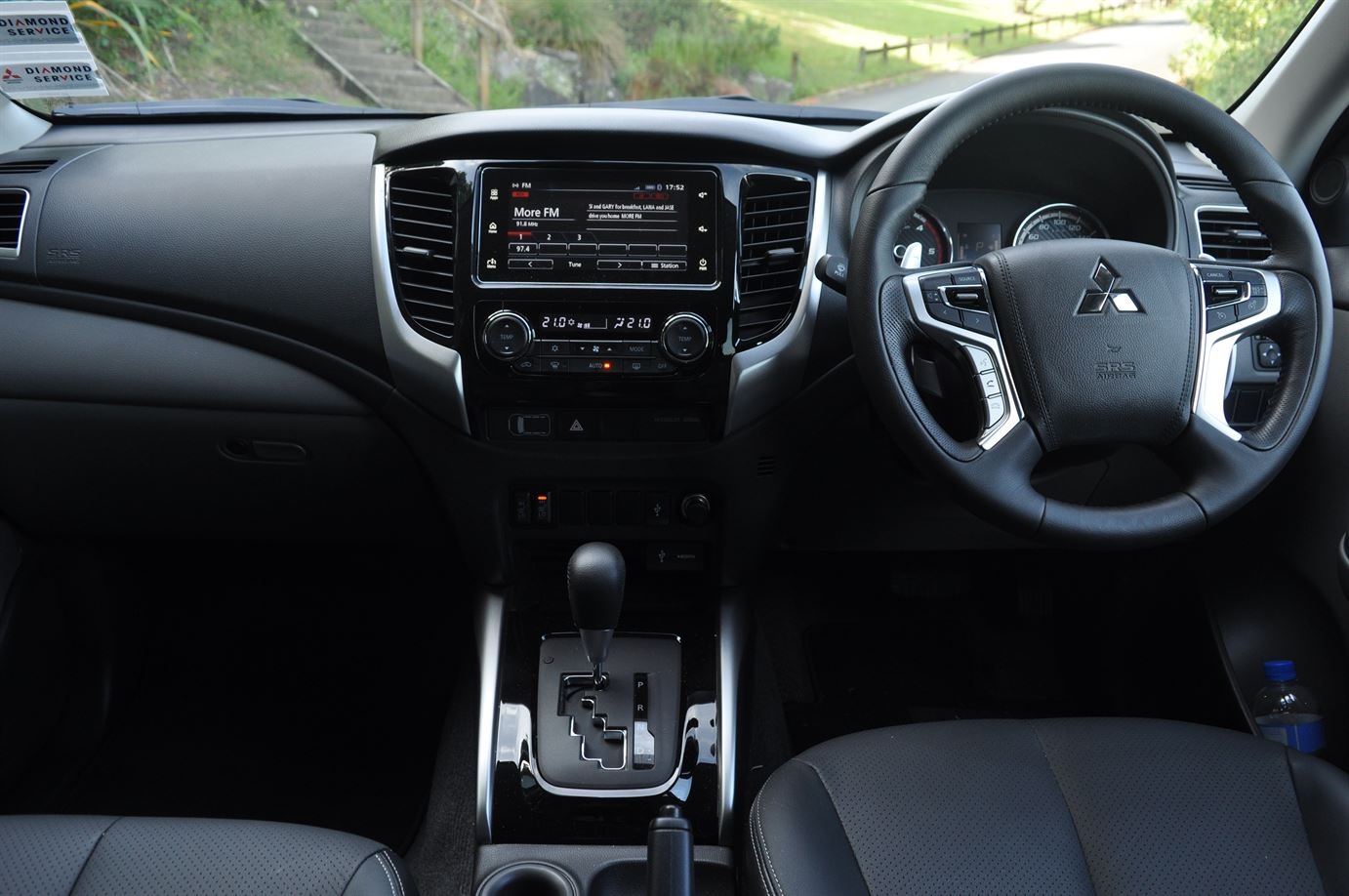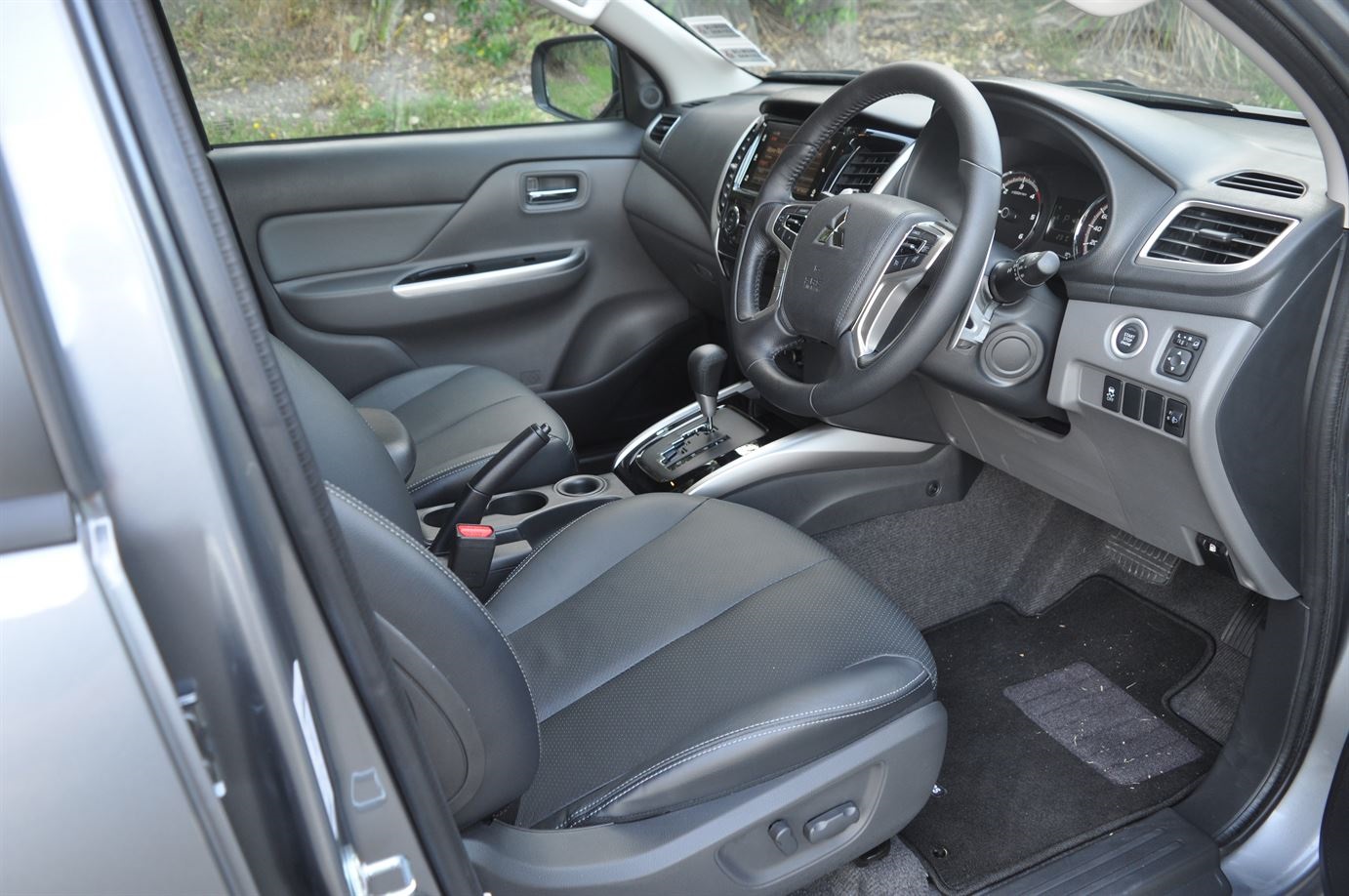Mitsubishi Triton VRX Double Cab 4x2 2017 new ute review
Mitsubishi Motors New Zealand introduced the new high-specification Triton 4x2 and 4x4 VRX double-cab utes in2016.

Mitsubishi Motors New Zealand introduced the new high-specification Triton 4x2 and 4x4 VRX double-cab utes in November 2016.
Targeting company executives and private buyers, the Triton VRX models are only available with automatic transmission.
Inside, both have leather upholstery, while the driver's seat receives power adjustment, and both front seats offer a two setting heating function.
Mitsubishi is equipping the VRX models with its smartphone audio link system, which also incorporates the reversing camera, and provides phone mirroring with Apple CarPlay and Android Auto.
Among items that distinguish the VRX models from lesser Triton variants is the leather-wrapped four-spoke steering wheel with remote controls for audio.
Other additions include the new dark pewter chrome grille and headlights, 17-inch alloy wheels and an integrated sidestep.
Good value
The Triton VRX 4x2 as reviewed here is currently retailing at an introductory price of $39,990 plus on-road charges up to $600, rather than the list price of $51,990.
In comparison, the Triton VRX 4x4 model starts from $62,990 excluding on-road costs.
Our review vehicle arrived with dealer fitted options, including a nudge bar ($987.85), deck liner ($501.40) tow bar package ($1005.10), soft tonneau cover ($650.90) and carpet mats ($124.20) adding $3269.45 to the list price, including GST and fitting charges.
The Triton VRX does not offer some features found in other top-spec utes, like lane change assist, forward collision warning alert, or active cruise control. However, it does offer keyless entry and start, automatic headlamps and rain sensing wipers, as well as LED daytime running lights.
There are seven airbags including a driver's knee bag, electronic stability control, as well as anti-lock brakes with an electronic brake distribution function.
For owners who have young children requiring a baby or booster seat, the VRX models both have ISOFIX fittings with two tether points.
The leather seats are comfortable to sit in for long journeys, while the climate controlled air conditioning quickly pulled the cabin temperature down on a hot sunny day. Ergonomics for the driver are excellent thanks to the powered seat which is also height adjustable, as well as forward and back, but it does not have a lumbar adjustment.
The Triton's steering wheel has both reach and height adjustment allowing both tall and short people to be comfortable with it.
Punchy diesel performance
The 135kW 2.4-litre four-cylinder turbodiesel engine packs a (quiet) punch thanks to its excellent torque figure of 437Nm at 2500 rpm. Where the other competitors offer a 6-speed or 8-speed automatic transmission, the Triton VRX happily lives with a 5-speed unit with a manual sports mode.
For most driving, you'd happily leave the selector in D and let the transmission sort out the shifts. But it's useful to have the ability to manually override the gearbox when towing or carrying a heavy load in the rear bed.
Mitsubishi claims 7.5-litres per 100km average fuel consumption for the VRX automatic, and we found this was a feasible figure with a mixture of urban and open road running.
Easy living
As a daily driver, the VRX is very easy to live with as it is a pick-up that feels more like a passenger car, particularly in its ride and handling.
Despite offering a 3000kg towing capacity and a 750kg payload, the Triton VRX suspension feels more compliant and far less firmly sprung than other vehicles in this category, but not at the expense of safe handling or steering.
The Triton has a nice positive feel to its hydraulic power steering system. It turns nicely into corners, and also has a comfortable ride quality over road corrugations, where its competitors can often feel harsh, and transmit noise and vibration into the cabin.
Cruising down the motorway in the Triton VRX is an almost silent experience thanks to the combination of the muted diesel engine and the aerodynamically sculpted body that cleaves the air with little wind noise around the windscreen and front pillars.
The one caveat of that curvaceous Triton cab design is that taller people (over 185cm) will find they need to duck their heads when hopping into the front seats. If they don’t, they may come to blows with the door frame, but the design does create 20mm more legroom for rear passengers.
Overall
The Triton VRX is a pick up that looks and feels more like a car to drive and to live with, and this will suit some buyers but it might be off-putting to others.
The design and the bling of the VRX won't appeal to some, but others will be more than happy with it - and even more pleased with the five-year, 130,000km new vehicle warranty and the 10-year 160,000km powertrain warranty, as well as five years of roadside assistance.
Price as tested: $43,859.45
Note: This was reviewed as a new vehicle.
Image gallery
Also consider





